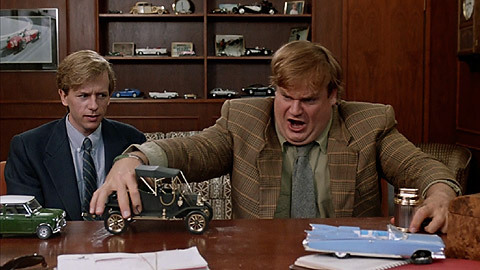An email just popped into your inbox with a new assignment from your boss. When it comes to what’s inside the email, which of the following would you prefer?
- Rigid, highly specific guidelines for how the task should be completed
- Instructions to proceed however you see fit, so long as the job gets done
Which did you choose?
Most of us would instinctively lean toward B. After all, who wants to be boxed in by somebody else’s instructions for how to do a job?
But in fact, if you want to do a good job and get it done in a timely manner, the better choice would be A.
It’s a fascinating concept that’s been demonstrated in workplaces of all kinds, from corporate environments to art studios: it’s constraint, not limitless freedom, that drives genius.
Let’s delve deeper into this phenomenon to better understand why to do your best work, limits and boundaries are actually a good thing.
The Great Work Study
The data that paved the way for our understanding of how constraints drive genius is found in the Great Work Study. In it, employee rewards and recognition firm O.C. Tanner used data from 1.7 million people to analyze what “doing great work” actually means—and how it gets done.
The firm compiled the study’s findings and combined them with real-world case studies from professionals in various lines of work. The result became a book, Great Work, which is basically a master thesis on what great workers do differently that sets them apart.
One of those things is working within constraints.
A shining example is architect Frank Gehry, who you may know as the builder of the Guggenheim Museum in Spain and the Disney Concert Hall in Los Angeles. O.C. Tanner’s Executive Vice President, David Sturt, spoke with Gehry as part of the study.
 As Gehry remembers, it was the very strict requirements for Disney Hall that forced him to create such a unique design. The building had to have flawless acoustics, so Gehry focused on an interior design that would yield impeccable sound quality. The by-product of that was the other-worldly exterior that would make the building so iconic.
As Gehry remembers, it was the very strict requirements for Disney Hall that forced him to create such a unique design. The building had to have flawless acoustics, so Gehry focused on an interior design that would yield impeccable sound quality. The by-product of that was the other-worldly exterior that would make the building so iconic.
And, Gehry had more to add about working within boundaries—or the lack thereof. As David Sturt explained in a piece for Forbes Magazine, “Gehry names one of his greatest architectural challenges as the time he was asked to design a house with zero constraints.”
When you have literally no boundaries, where do you even begin? It’s overwhelming.
Constraints Solve Problems
Constraints are there for a reason (and no, it’s not to make you pull your hair out—though it can certainly feel that way). Nine times out of ten, they’re there to make sure a specific problem is addressed.
For example, you’re given a budget constraint to make sure the client’s needs are met without spending too much money. Or, maybe you’re given a time constraint to ensure a solution is delivered in time for a key event.
We’ve all had that one task on our to-do list that just never seems to get done. That’s probably because it doesn’t have a deadline. Putting a time constraint in place forces you to accomplish the task. Voila! problem solved.
On the flip-side, some creatives claim they do their best work under the pressure of a deadline. Again, there’s another example of a constraint forcing your creative juices to get flowing.
Perhaps one of the most extreme examples of how constraints solve problems is Apple visionary Steve Jobs. Jobs was notorious for promising upcoming features to the public when Apple’s engineers hadn’t finalized them yet.
Millions of people anticipating a palm-sized computer? Now there’s something that’ll force you to figure out how to make an iPhone! Whether Jobs knew it or not, he was exercising the power of constraints to force his team to innovate faster than anyone else.
Building Blocks for Solutions
Instead of seeing constraints as barriers to climb or hoops to jump through, we should embrace them as building blocks to arrive at a solution—a solution we might never have thought of otherwise.

I love cooking shows like Master Chef and Top Chef. Specifically, I like the challenges where the contestants are given some zany basket of ingredients to work with and forced to come up with a chef-level culinary creation. Their dishes always blow my mind!
Of course I like these shows because they’re fun to watch, but it’s also the perfect illustration of how constraints are the building blocks for creativity. Without being handed one of those crazy mystery baskets, what cook would ever have thought to pair pork chops with pears or dark chocolate with steak?
Though your work might not be quite as exciting as a nationally-televised cooking show, you can use the same approach to boundaries to come up with unique ways to solve problems for your customers.
Do you have an example of how having constraints forced you to come up with a genius solution? Share it with us in the comments section.
We embrace unconventional thinking about money and entrepreneurship. Subscribe to our blog and never miss a post!
















